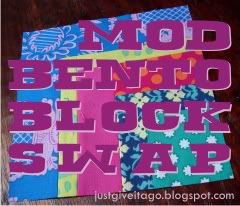Once again, I participated in a Digital challenge, and last week's challenge was to use eight or more photos in a layout. Here's the link to Diane's blog entry to see the challenge. I initally had some hesitation to participate in this challenge, because I didn't think I had enough pictures of one event to do the challenge.. then while I was looking through my pictures, I decided to do a layout from Easter! It worked out perfectly because Zoe and I colored eggs, and the girls also got easter baskets, so I took pictures of those that I ended up including in the layout. Here's my layout.
And one of the lovely ladies pointed on the FCTSC message board pointed out another tutorial was needed, so here I am, making another one! And just for the record, I do not mind! I LOVE learning about photoshop and learning new methods and techniques and I'm more than happy to share my knowlege. This tutorial will be covering the techniques used in the bottom right picture, and the top right picture. As you can see, the eggs are in color, but the rest of the picture is not. I'm also going to go off on a tangent here and this tutorial is... NOT going to involve fish or fishing trips.. YAY! Before I start though, I want to explain a bit about how I initially started using this technique and why.
When Zoe was a baby, she had the BRIGHTEST blue eyes I've ever seen -at that point of my life anyway; since then I've seen bluer- on a person, and I LOVED how blue they were. I said 'were' because they turned a green/hazel color about a year or so ago. Anyway, I would color block -the term of this technique- her eyes in pictures and then do the rest in black and white. Here are some early examples.
Anyway, I eventually got brave and tried larger objects or subjects, which resulted in this:
However, for simplicity, and ease, I will be demonstrating this with a simple object with very good contrast; that is contrast between the subject and the background.
Here's my drinking cup, please excuse my screen, I didn't realize I need to clean it off! Obviously, the green is very contrasting with the black and white and brown of my desk, the bag of baby wipes and my wall. BTW, that book you see is a chipboard album I covered in zebra minky fabric, and have yet to finish it up; since I'm not sure what I want to do with it yet.
Anyway, the first thing to do is obviously open the image up in photoshop!
The tool you want to start with is the magic wand. Here's a closeup of where it's at.
As with everything in photoshop, it's extremely important to use layers. However, this time we're doing layers slightly different. Anyway, use the magic wand to completely select the cup (in my case anyway).
Once your object is completely selected, it'll have this black and white line going around it. Keep in mind, sometimes it is easier to select the area AROUND the subject -for example you were trying to colorblock a person standing up against a solid colored wall- and then inverse the selection to get your subject. To inverse, you go to "Select > Inverse" and it'll inverse your selection to whatever is not selected. This is very much like my first tutorial about digital elements; however we're taking it a few steps further with this one. Anyway, the next step is to copy the selected image. It's also important to work with the largest file size possible in terms of how many pixels it is wide and tall.
You do this by going to "Layer > New > Layer via copy". And at that point, you'll have a second layer, and it should look something like this in your layers box in the lower right corner -that is if you left the default locations for everything as it is-. The next step is to make sure you have your background layer selected or highlighted -opposite of what you see in the above image- and then deselect your image by going to "Layer > Deselect". This is to ensure that none of your background is selected, because the next step if not done correctly will result in your object being desaturated, rather than the whole background. To desaturate, you go to "Image > Adjustments > Desaturate". This will remove all the color from the selected layer, and turn it into shades of gray.
The next step after this is to merge your layers. You do this by going to "Layers > Merge Down" (this works if you have the top layer selected) or "Layers > Merge Visible". Then once you are happy with the image and how it turned out, adjust the size of the picture -if you want- and then save it as a .jpg file! For some reason in photoshop, if you work with layers, it'll try to default save it as a psd (photoshop) file which won't work because most webpages don't recognize the file as a psd, and it won't show.
Keep in mind too, you'll almost never get a perfect selection of the object; this is okay, as long as you try to get MOST of it. Keep in mind too, if the background color of your image is too close to the color of the subject -like a couch that matches too closely to your wall color- , it'll most likely not work with what you want to do. If you plan on doing this with a particular object or person in mind, be mindful about the closeness of the shades with the background and such.
Hope that helps, and if anyone wants a tutorial on how I did the "black box with color inside over the desaturated background" like you see on the carton of eggs, or the four eggs with our names on it let me know!
Thursday, May 28, 2009
Subscribe to:
Post Comments (Atom)


















Thanks again for doing the tutorial - I love the photos of your daughter's amazing blue eyes!
ReplyDelete